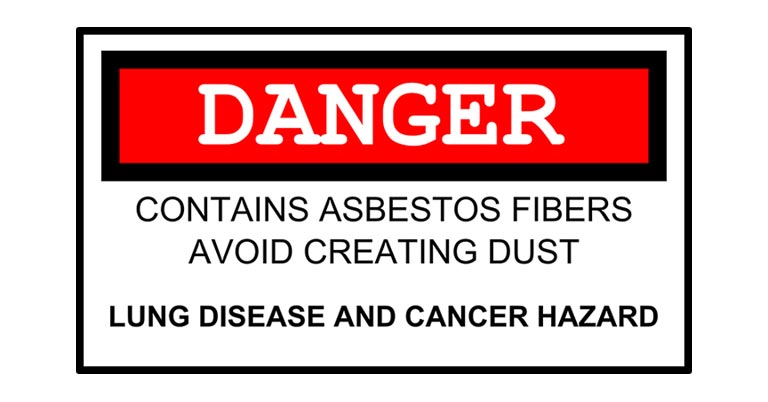
28
October 2023
By James
Category: Industry
Understanding Asbestosis: Causes, Symptoms, Diagnosis, and Treatment
An Introduction to Asbestosis
Asbestosis is a debilitating and life-threatening lung condition caused by prolonged exposure to asbestos fibres. This article delves into the various aspects of asbestosis, including its causes, symptoms, diagnosis, and treatment. With its profound impact on the lives of those affected, asbestosis is a topic that warrants comprehensive understanding.
Asbestosis Causes
Asbestosis is a consequence of asbestos exposure, which occurs through inhalation or ingestion of asbestos fibres. When these microscopic fibres are released into the air, particularly during activities such as mining, construction, or the removal of asbestos-containing materials, they become a grave health hazard. Asbestos fibres are inhaled into the lungs and can become trapped, causing inflammation and scarring over time.
These fibres, too small to be visible to the naked eye, can easily penetrate deep into the lung tissue. Over time, this leads to the development of fibrous scar tissue, primarily in the lung's air sacs. The scarring inhibits the elasticity of the lung, making it difficult to breathe. The severity of asbestosis is closely related to the duration and level of asbestos exposure, as well as the type of asbestos fibres encountered.
Asbestosis Symptoms
The symptoms of asbestosis typically manifest several decades after the initial asbestos exposure, making early diagnosis challenging. Common symptoms include:
- 1. Shortness of Breath: This is often the earliest and most prevalent symptom of asbestosis. The scarring of lung tissue restricts its capacity to expand and contract, making it harder for individuals to breathe efficiently.
- 2. Persistent Cough: Many patients experience a chronic cough, often accompanied by the production of mucus.
- 3. Chest Tightness: A feeling of tightness or discomfort in the chest may occur due to reduced lung capacity.
- 4. Fatigue: The decreased ability to inhale oxygen results in reduced energy levels, leading to chronic fatigue.
- 5. Clubbing of Fingers: This condition, where the fingers become thicker at the tips, is associated with advanced asbestosis.
- 6. Crackling Sounds in Lungs: Lung scarring can produce a distinctive crackling sound when listening to the chest with a stethoscope.
- 7. Weight Loss: Individuals with asbestosis may experience unintentional weight loss.
Asbestosis Diagnosis
Diagnosing asbestosis involves a combination of clinical evaluation, imaging tests, and lung function tests. Medical professionals consider the patient's history of asbestos exposure as a significant factor. Key diagnostic procedures include:
- 1. Medical History: A detailed history of asbestos exposure and the onset of symptoms are crucial in diagnosing asbestosis.
- 2. Physical Examination: Healthcare providers conduct physical exams to assess the presence of symptoms and lung function.
- 3. Imaging Tests: Chest X-rays and high-resolution computed tomography (HRCT) scans are essential for visualising lung abnormalities and identifying characteristic signs of asbestosis, such as lung scarring.
- 4. Lung Function Tests: These tests assess lung capacity and functioning. Spirometry measures airflow, and gas diffusion tests evaluate how efficiently the lungs exchange oxygen and carbon dioxide.
- 5. Bronchoscopy: In some cases, a bronchoscopy may be performed to rule out other respiratory conditions and to obtain samples for analysis.
- 6. Biopsy: A lung biopsy is not typically needed for diagnosing asbestosis but may be conducted to confirm the presence of asbestos-related lung disease.
Asbestosis Treatment
Asbestosis has no cure, and the damage to the lungs is irreversible. However, certain treatments and interventions can help manage the condition and improve the patient's quality of life.
- 1. Symptomatic Treatment: The primary aim of treatment is to alleviate symptoms and improve lung function. Medications such as bronchodilators and oxygen therapy can be prescribed to enhance breathing capacity.
- 2. Smoking Cessation: Smoking greatly exacerbates the symptoms of asbestosis, so quitting smoking is crucial for patients diagnosed with the condition.
- 3. Pulmonary Rehabilitation: This program includes exercise, breathing techniques, and nutritional counselling to help patients manage their condition and improve their overall well-being.
- 4. Vaccinations: Patients with asbestosis are at an increased risk of respiratory infections, so receiving vaccinations against pneumonia and influenza is recommended.
- 5. Preventive Measures: Avoiding further exposure to asbestos is paramount. This may include workplace changes or ensuring a safe living environment.
- 6. Lung Transplant: In severe cases, a lung transplant may be considered as a last resort, although it is rarely performed due to the scarcity of donor organs.
Prognosis
The prognosis for individuals with asbestosis is often guarded, as the condition is progressive and irreversible. Factors such as the duration and intensity of asbestos exposure, smoking history, and the patient's overall health influence the rate of disease progression. While there is no cure for asbestosis, medical interventions and lifestyle modifications can help manage symptoms and slow the disease's advancement.
Prevention
Preventing asbestosis is primarily centred on avoiding asbestos exposure. This involves protective measures such as:
- 1. Workplace Safety: Employers should implement strict safety protocols when working with asbestos-containing materials. Workers should receive proper training, wear protective equipment, and follow guidelines for minimising exposure.
- 2. Regulation Compliance: Adhering to local and national regulations regarding asbestos handling and removal is essential.
- 3. Home Renovation Awareness: Individuals should be aware of the risks of asbestos when renovating older homes and should take precautions when handling potential asbestos-containing materials.
- 4. Regular Health Checkups: Routine medical examinations can help identify lung conditions early, allowing for timely intervention and treatment.
Conclusion
Asbestosis is a debilitating and often fatal lung disease caused by exposure to asbestos fibres. While the disease is progressive and irreversible, early diagnosis, medical intervention, and lifestyle modifications can significantly improve the quality of life for affected individuals. Prevention, through strict safety measures and asbestos awareness, remains the most effective means of combatting this life-threatening condition.


